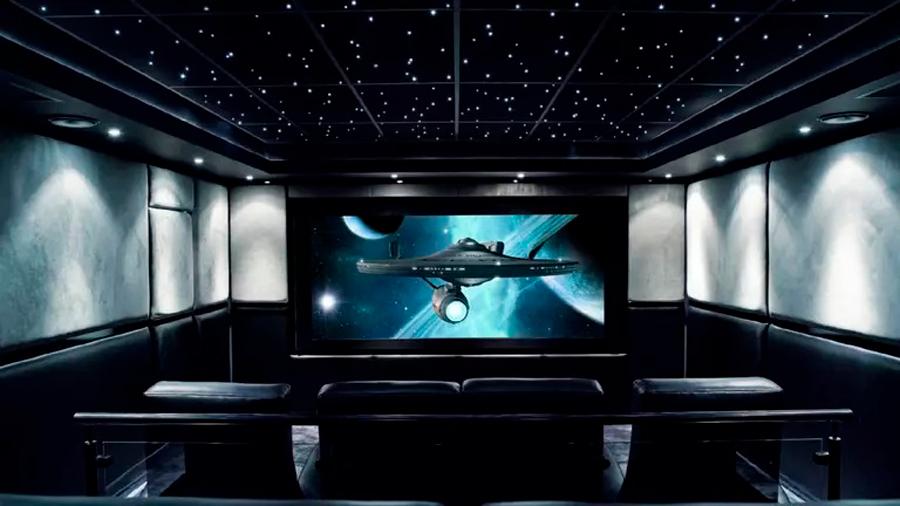What size projection screen should I choose?

Choosing a projection screen can be relatively simple or very complicated, but it is necessary because depending on the choice you make, your experience will be better or worse. Many factors influence the choice of a model. Of course, always taking into account the economic aspects. However, we will continue to see some simple steps that will help you know which is the ideal projection screen.
To obtain good results, in addition to the projector, it is essential to choose the right projection screen . A white background surface will help you see the content optimally. You have probably thought about projecting directly onto the wall, but perhaps the best option is to opt for a screen. Therefore, in this guide, we will show you some tips and features that you should consider when purchasing it.
Types of screen that exist
When choosing a screen to project the content you want to view from the projector, it is important for you to know that there are two different types you can choose from.
- Screens fixed projection : these are the ones you need fix to the wall , and they don't move from there. If the projector is always placed in the same place, such as in classrooms, meeting rooms and other business occasions, it is ideal. Inside these, its 4 corners are fully fixed. These fixed brackets on the top can make them roll (in the classroom, the teacher usually pulls the washing machine down to extend it and increase the supporting force). Now electric projection screens are equipped with a remote control, which can be raised or lowered according to our preferences.
- Screens portable – These usually come with a tripod for fixing and can be rolled up or folded to be stored in their case. They can also be found under the name of screen. They are perfect if the projector is not in a fixed installation and we plan to move it to different rooms. Like a mini projector for example.
When choosing one type or another, it is important that you take into account the use you want to give it, if you are always going to keep it fixed in one place or if you have to transport it from one place to another.
It may also seem obvious, but the appropriate aspect ratio and size should not escape us. It depends on the use we give to the projector, the native format and the maximum size supported by the projector, we must evaluate the following elements.
For use as home theater, A 16:9 widescreen format is recommended. The vast majority of content we view will have this Full HD or 4K format . It is therefore ideal for home use. In addition, these screens are usually equipped with with a black border which acts as a dual-function frame. On the one hand, it allows for correct placement of the projection, and on the other hand, it facilitates viewing by delimiting the projected image.
For professional use , we recommend 4:3. Simply because it is the format used for presentations. And the one used by computers. In many rooms, we still see screens with a 1:1 ratio ( square format ), but it will always be more appropriate to use the same screen format as the projection.
During of the choice of size , it is important for you to know that even if you have plenty of space, it's not always better to have a bigger screen. Keep in mind that projecting an image that is too large can reduce the optimal brightness and cause too many pixels to appear, thus degrading the quality. Therefore, it is important to make sure that the screen size is within the range indicated for the type of projector you are using.
Properly installing your projection screen will vary depending on the model, cost, and procedure. Knowing how far away I need to place the projector, or how wide of a screen you would like, you just need to apply this simple formula or rule of three:
Projection Factor = Distance / Screen Width
In summary, resolution:
- 4K : distance = screen width x 1
- Full HD : distance = screen width x 1.5
- HD Ready / WXGA: distance = screen width x 1.8

You can also consider the viewing format when choosing the viewing distance.
- 16:9/16:10 format . In this case, the ideal diagonal can be half the total length of the projection room. If the screen measures 100 inches, or 2.88 meters, you will need a distance of 2.88 meters to view it comfortably.
- 2.35:1 format . For this type of format, the best option is that the distance is equal to a quarter of the total length of the room where it will be projected.
- Format 4:3 . On this occasion, it is recommended that the height does not exceed one sixth of the total length of the room.
Along with all this, you have to keep in mind that the height which must be between the screen and floor for domestic use must be 60 to 90 cm , while for professional use it is recommended that it be around 125 cm.
